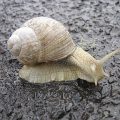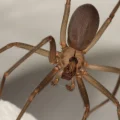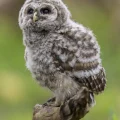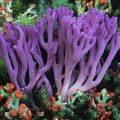The Green June Beetle, also known as the Cotinis nitida, is an interesting insect that can be found in many parts of the world. This beetle is a type of scarab beetle, and has a metallic green body with bronze highlights. These beetles grow to about 1 inch in length and are typically seen flying in low circles around lawns or turf grass during the months of June and July.
Green June Beetles usually prefer sandy soil that is high in humus or organic matter. Females will burrow into the soil and lay their eggs approximately 6 to 8 inches below the surface. After two weeks, the eggs will hatch and larvae will feed on the organic matter until winter sets in.
Unfortunately, these beetles can cause quite a bit of damage to garden plants if there are large numbers present. They enjoy feeding on leaves which can leave plants looking ragged or full of holes. In some cases, heavy infestations of Green June Beetles can quickly defoliate entire gardens within just a few days!
Fortunately, there are natural predators that help keep Green June Beetle populations uner control. Some examples include birds, frogs, spiders, wasps and lizards. Additionally, these bugs can be beneficial for gardens because they contribute to pollination and help improve soil quality by breaking down organic matter into nutrients that plants can absorb more easily.
If you happen to spot these little brown or iridescent green beetles around your home this summer, don’t panic – they won’t hurt you! Just be sure to keep an eye out for any signs of damage they may cause to garden plants so you can take action if necessary.
Are Green June Beetles a Threat to Humans?
No, green June beetles (Cotinis nitida) are not harmful to humans. They do not bite or sting and pose no threat to people. However, they can be detrimental to crops and turf grass; their larvae feed on the roots of many vegetation types, including corn, potatoes, and grasses. Adult beetles feed on ripe fruits such as apples, peaches, and figs. This can cause significant damage to crops and gardens if populations become large enough.
Attracting Green June Beetles
Green June Beetles are attracted to a variety of plants, including roses, grapes, and apple trees. They are also attracted to ripe and decaying fruits, such as peaches, plums and figs. The beetles feed on the nectar and pollen of these plants as well as the sap of fruit trees. In addition, they are drawn to lawns with moist soil conditions that contain high levels of organic matter. They may also be attracted to light sources at night.
The Impact of Green June Beetles on Gardens
Green June beetles, also known as June bugs, can be harmful to gardens. Adult June bugs feed on the leaves of garden plants, causing damage that appears as ragged or hole-filled leaves. Heavy infestations of June bugs can completely defoliate a garden in just a few days. Fortunately, there are a few natural predators that can help keep June bug populations under control. Ladybugs and parasitic flies are two options for controlling thse pests without harsh chemicals. To prevent problems with June bugs in the garden, it’s important to keep plants healthy and well-maintained. Regular pruning and mulching can help reduce potential damage from these pests.
The Benefits of Green June Beetles
Yes, green June beetles are actually beneficial to the garden. These small iridescent green beetles love to hang out in large numbers early in the summer and are attracted to porch lights on warm nights. They help break down organic matter, such as dead leaves and other debris, which helps to enrich the soil with nutrients. The larvae also feed on harmful grubs that can damage lawns and gardens, thus helping to keep pest populations in check. In addition, they provide an important food source for birds and small mammals.
Are June Bugs Harmless?
Yes, June bugs are harmless to humans and do not bite. Native to Maine, these beetles tend to swarm around porch lights or lighted screen doors at night, making them a nuisance for homeowners. While they can often be found in large numbers, their presence does not pose any health risks. June bugs typically feed on foliage and flowers, but don’t cause significant damage. They are harmless to humans and pose no threat of injury or disease transmission.
Are June Bugs Friendly?
No, June bugs are not friendly. While they are generally harmless and do not cause any harm to humans, their presence can be quite bothersome. They are drawn to lights, so spending time on a porch or patio that is lit up can be a challenge. They may fly around and land on you, as well as buzz in your face and get caught in your hair. In addition, they may also try to enter your home through open windows or doors.
Do Green June Beetles Have the Ability to Fly?
Yes, green June beetles do fly. They are typically seen flying near the ground in landscapes from mid to late summer. Their flight is often described as clumsy and labored, but they are capable of short bursts of speed when disturbed. Green June beetles have a distinctive sound when they fly, so it is easy to recognize them by their buzzing noise.
The Impact of Green June Beetles on Tomato Plants
No, green June beetles do not typically eat tomato plants. Instead, they feed on the ripe fruit of the plants. They will chew on the leaves and stems of tomato plants, but this rarely causes significant damage. Adult green June beetles can be found actively feeding on ripe fruits like tomatoes, figs, berries, apples, peaches, plums and even corn.
Are June Beetles Harmful?
June beetles, more commonly kown as June Bugs, are a type of beetle found throughout North America. While they can be annoying due to their presence and loud buzzing noise, they are generally harmless to humans and animals. However, adult June Bugs can cause damage to plants, trees, and lawns by eating away at their leaves. They feed on the sap from leaves and flowers and can cause the foliage to turn brown or yellow in color. If you have an infestation of these pests in your yard, it is important to take steps to minimize their damage by using insecticides or natural repellents. Additionally, hand-picking the beetles off your plants may help reduce the population in your yard.
The Invasiveness of June Bugs
Yes, June bugs (also known as May beetles or June beetles) are an invasive species and can cause serious damage to gardens and ornamental trees. Native to North America, these beetles emerge from the soil in late spring and early summer (hence their name) and feed on flowers, fruit, and leaves. They can quickly strip a plant of its foliage and flowers, leaving it looking like it has been eaten down to practically nothing. To protect your garden or trees, it is important to remove any June bugs you find as soon as possible.
Are June Bugs Harmful to Dogs?
No, June bugs are not toxic to dogs. However, if a dog consumes several of them, it can cause an upset stomach and lead to vomiting or diarrhea. June bugs are common in Oklahoma, but as long as your dog does not consume too many of them, there should be no cause for concern.
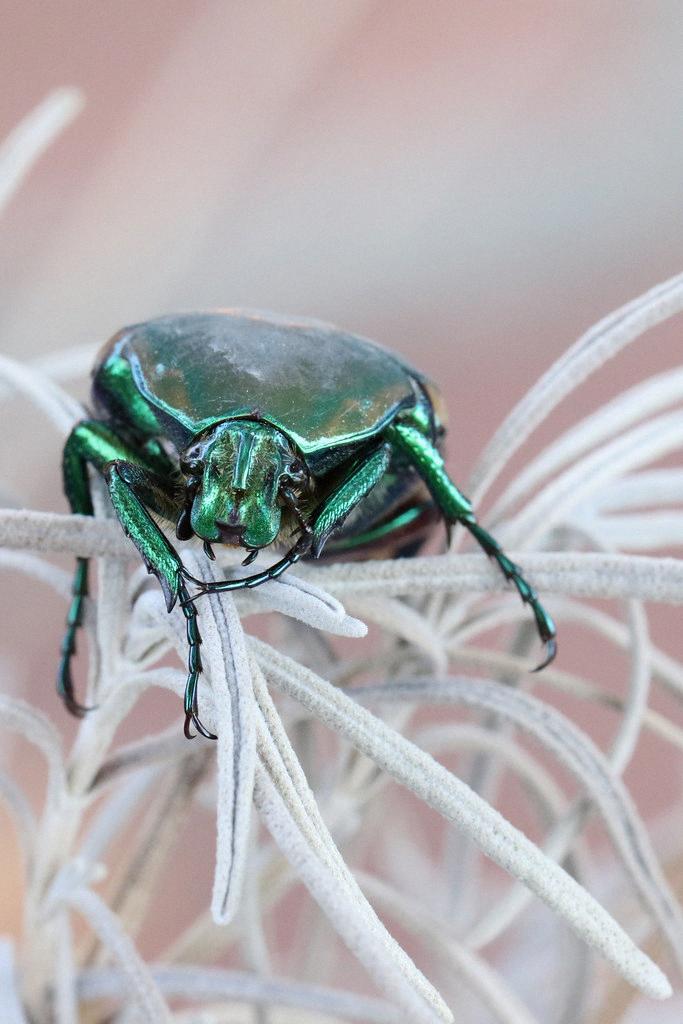
Source: flickr.com
The Impact of Green Beetles as Pests
Yes, the green fruit beetle (Scarabaeidae) is considered to be a pest. Adult beetles have been known to feed on ripe fruits, and they are attracted to the odors of manure and fermenting fruit. They are also capable of flying long distances, making them difficult to control or eliminate. In addition, their larvae may damage turf grasses and other plants in gardens and lawns. As such, it is important for those who grow produce to take measures for controlling this pest.
The Abundance of June Bugs in Yards
June bugs (also known as May or June beetles) are a type of scarab beetle that can be found in many parts of the world. There are several reasons why tere may be more June bugs in your yard than usual.
One likely cause is an infestation of grubs in your lawn. These grubs feed on the roots of grass, and when their population increases, they attract more adult June bugs looking for food sources. In addition, if your lawn has a thick layer of thatch or dead grass, it creates a perfect habitat for grubs to thrive and reproduce.
Another potential reason for an increase in June bug numbers is the use of chemicals such as fertilizers and herbicides on your lawn. These chemicals can disrupt the natural balance of soil and plant life, making it easier for grubs to survive and reproduce.
Finally, some areas may have higher populations of June bugs due to climate conditions. Warmer temperatures and high humidity can create an ideal environment for these pests to thrive in.
It’s important to take steps to get rid of the excess June bugs in your yard before they become a serious problem. Removing excess thatch from your lawn and avoiding the use of harsh chemicals can help reduce their presence while encouraging beneficial insects like ladybugs which feed on them. Additionally, you should keep an eye out for signs of grub infestations so that you can take preventive measures against them as well.
Conclusion
In conclusion, the green june beetle, or Cotinis nitida, is a large bronze and metallic green beetle that is often seen in June and July flying around lawns and turf grass. They are not dangerous to humans but can do considerable damage to garden plants by feeding on their leaves. Fortunately, thre are natural predators that can help keep June bugs under control. While they may be a bit creepy to some people, they can also be beneficial to the garden by eating decaying plant material and aerating the soil. With proper management, these beetles can be beneficial to your garden while also protecting your plants from damage.


